For years, and through an historically long deployment during the most disruptive phase of the COVID pandemic, the aircraft carrier Nimitz was hauling around polluted water in its potable water tanks, and more than a third of those 26 tanks were out of commission.
But that issue was never formally documented or addressed until JP-5 jet fuel got into the carrier’s drinking water last fall while the ship was getting ready to deploy, sidelining the carrier and sickening at least 11 sailors, according to a Navy investigation released this week.
Fellow carrier Abraham Lincoln suffered its own drinking water contamination in September as it ended a deployment, and a separate investigation into that incident released this week shows that the carrier was dealing with water purity issues for longer than the Navy has publicly acknowledged.
The Navy has previously disclosed that noxious bilge water got into Lincoln’s potable water system in September, but the investigation also shows that five of Lincoln’s potable water tanks tested positive for bacterial contamination in early 2022, prior to the ship’s deployment.
Before that, no other carrier had had a water tank test positive in the past two years, and such a test should have been a warning sign, according to the report.
“Lincoln allowed this deviation to normalize without clearly bounding the problem or taking corrective action,” the report states. “Though Lincoln was able to address each (potable water) tank that tested positive before putting that (potable water) tank back into service, thorough investigation of these results could have provided an opportunity for early root cause identification.”
RELATED
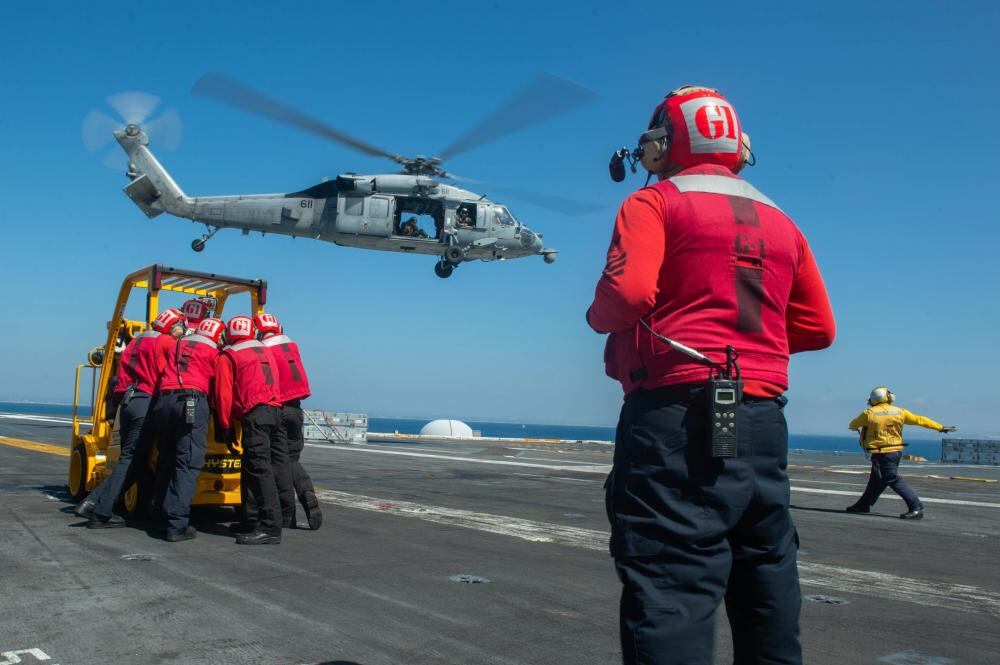
A bilge space is where accumulated dirty water, oil, chemicals and other assorted ship sludge are stored.
Lincoln also got underway without an in-line water treatment system that investigators found could have helped mitigate some of the bilge contamination, and the probe found no casualty reports indicating that the system was down.
When Puget Sound Naval Shipyard workers inspected the ship’s problematic potable water tank in October, a few weeks after the contamination was discovered, “the bottom of the tank had a visible black substance layer,” the investigation states.
No Lincoln sailors were sickened by the bacteria found in that ship’s water system, according to Navy officials.
Go here to read the Nimitz investigation and here to read the Lincoln investigation.
In light of these events in September and October, Naval Air Forces Commander Vice Adm. Kenneth Whitesell directed the establishment of an Aircraft Carrier Potable Water Working Group to review all incidents involving potable water on carriers within the past year.
The group was supposed to report back its findings by Jan. 31, but they are not included in the investigations the Navy released this week and officials did not provide on-the-record responses to Navy Times questions about that group’s findings.
There have been no other potable water contamination cases on carriers since the Lincoln and Nimitz, and no one has been disciplined in connection to those two incidents, according to Naval Air Forces spokesman Cmdr. Zachary Harrell.
The type community is working with Navy medical and public health officials to “continue a dedicated effort to review and update policies and procedures on potable water maintenance and corrective actions to ensure the health and safety of our Sailors,” Harrell said in an email Wednesday.
Multiple messages were also sent to carrier commands late last year reminding them to follow proper procedures and instructions when dealing with potable water.
“The U.S. Navy is taking this issue very seriously,” he said.
Harrell did not respond to specific questions about the investigations’ findings that both carriers had water quality issues before the contaminations came to the fore last fall.
In a statement, Whitesell said that “access to clean, safe water is a priority that we as Sailors take extremely seriously,” and that efforts to provide bottled water and treat sickened sailors during the contaminations are “a clear reflection of the leadership and compassion we have on our aircraft carriers.”
Nimitz’s longstanding water problem
“In 2020 or earlier,” Nimitz’s crew discovered that water in at least one of the ship’s potable water tanks was tainted with seawater, but that deficiency was never formally documented or addressed, according to the report.
“Failure to formally document the deficiency and promptly correct the issue allowed the condition to worsen, and it left the problem to future crew members who had no insight into circumstances of the original problem,” the investigating officer wrote.
Nimitz completed an historic, 340-day deployment from April 2020 to February 2021.
Likely unbeknownst to the thousands of sailors onboard for that cruise, one of Nimitz’s potable water tanks was also fouled with jet fuel during that deployment, after “JP-5 leaked into the potable water tank through a deteriorated manway cover gasket,” the investigation states.
That manway cover was located in a bilge space and the leak likely occurred “due to misalignment or malfunction of the ship’s main drainage system.”
“The ship’s crew was unaware of the presence of JP-5 in (one of the potable water tanks) prior to 16 September 2022,” the investigation states.
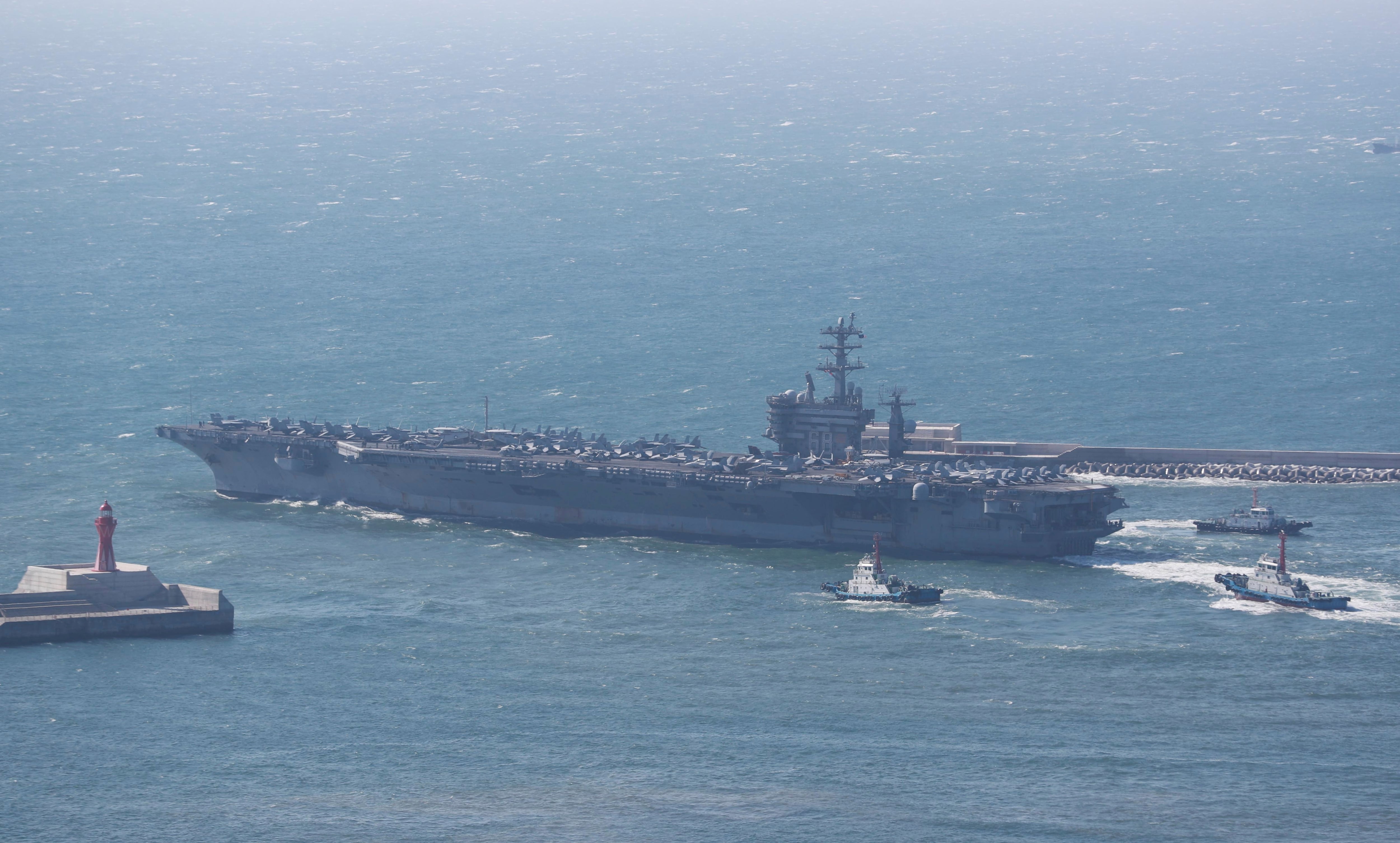
Months before, in February 2022, the ship’s reactor officer discovered that eight of Nimitz’s 26 potable water tanks were out of service and not being used to supply drinking water to the crew.
“His investigation revealed the eight tanks had been out of service since at least September 2020,” the report states.
Harrell did not respond to Navy Times questions regarding whether it is normal for a carrier to have so many potable water tanks offline.
The only record noting the tank issues was “an informal tracking sheet” at the ship’s water control watch desk, the report states.
That reactor officer, whose name is redacted in the publicly released report, directed the reactor propulsion division to make plans to clean, inspect and restore the tanks prior to the ship’s upcoming deployment.
While the ship was in maintenance at Puget Sound Naval Shipyard, Washington, in March 2022, the ship requested assistance to empty and clean the eight potable water tanks “that were full of liquid but out of service for suspected seawater contamination,” the report states.
But just one of the fouled tanks was cleaned, inspected, sanitized and restored to service, “due to limited time and resources available.”
“Concerned there would be insufficient time to restore the remaining seven tanks to service, the Reactor Officer directed the Reactor Propulsion Division to develop plans to empty and restore the remaining tanks without the assistance of the shipyard,” the report states.
While developing plans to empty the ship’s potable water tanks on their own, the crew was “unaware that any of the tanks contained JP-5,” and assumed they were just dealing with seawater, based on the ship’s informal records.
“This was a major factor in the ship’s understanding and consideration of the risk associated with pumping liquid from one tank through other water piping,” the report states. “The ship did not know or consider the possibility that the tank might contain contaminants other than seawater.”
Nimitz’s jerry-rigged plan to empty and flush the potable water tanks did not comply with polices to ensure that the potable water system remained free of contaminants.
The ship should have held a briefing on Sept. 16, before starting the job, to bring key officers up to speed, the report found, but the plan went forward without everyone being on the same page.
And that day, water stinking of JP-5 started flowing out of water fountains, sinks and ship sample points as the crew emptied one of the potable water tanks.
Leaders in charge of those systems were “unable to determine or take appropriate corrective actions to prevent more significant consequences from occurring, which ultimately led to spreading JP-5 to ship’s distribution system,” the report states.
The fuel spread to the ship’s potable water distribution system that evening, and it later spread to other potable water tanks “when operators attempted to locate the source of JP-5 by recirculating and sampling” some of the potable water tanks.
Just before 9 p.m. on Sept. 16, the engineering officer on watch and the water control watch received reports from the wardroom, staterooms and berthing that there was JP-5 in the water.
RELATED
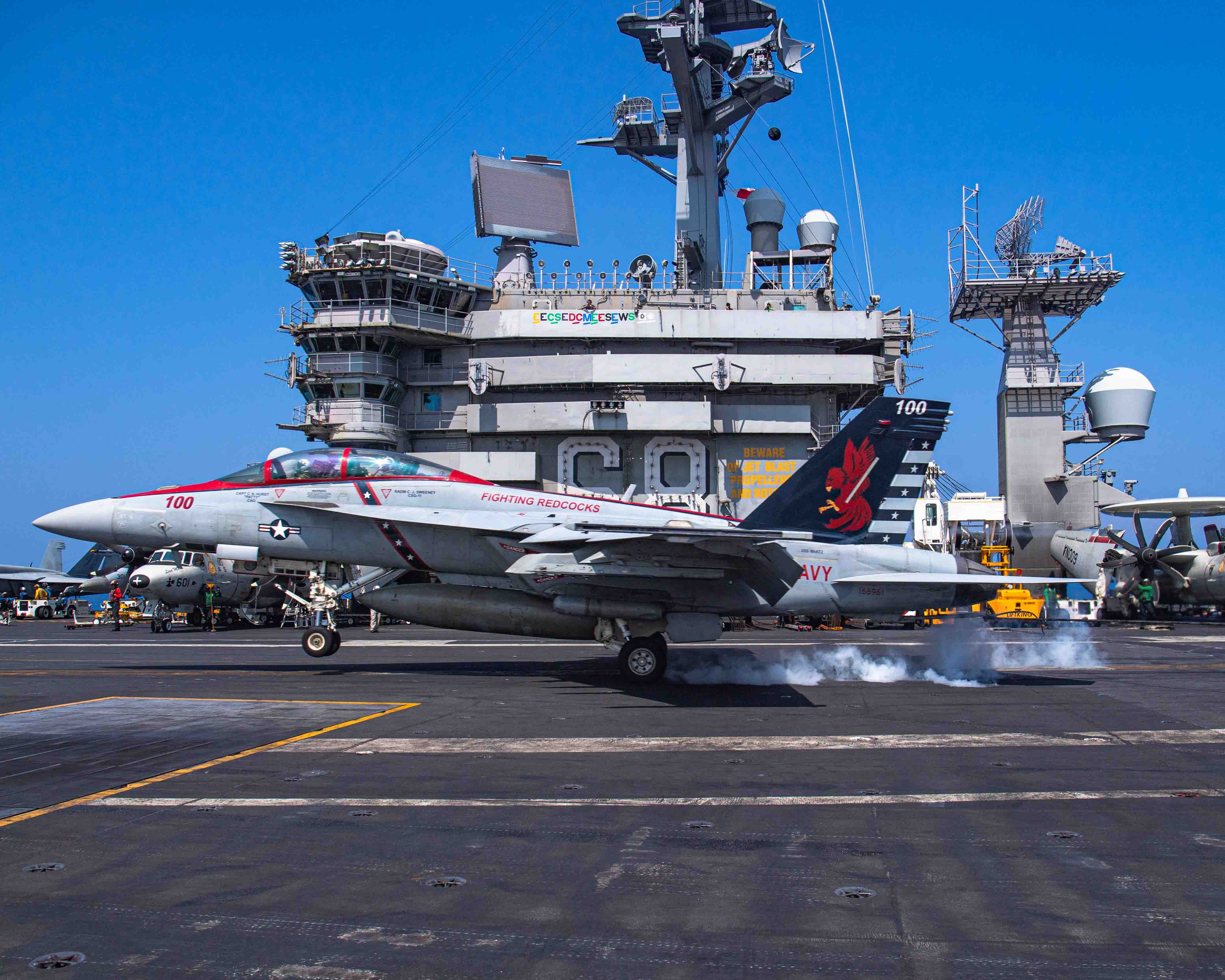
As news of the contamination spread, the report states the ship’s command “took appropriate action to keep the crew safe and initiated actions to recover the ship’s potable water system.”
The following morning, the ship’s senior medical officer trained the medical department on symptoms of fuel ingestion in case crew members presented with those symptoms.
“People who visited medical complained of minor symptoms common to many ailments: upset stomach, nausea, headache or rash,” the report states.
The ship arrived at Naval Air Station North Island, California, the next day, but other issues occurred that slowed a return to normal.
At one point, the ship requested a second hose to help pump out all the sewage from the ship’s toilets, showers and galleys, and a base public works employee asked a sailor why a second hose was needed.
The sailor inaccurately stated that they were pumping JP-5 into the sewer, according to the report, so the base employee halted the raw sewage offload.
To stop the sewage tanks from filling up while pumping was paused, the ship halted laundry and potable water, and Nimitz sailors had to use aircraft carrier Carl Vinson’s berthing barge for showers.
The confusion resolved by the night of Sept. 18, and the next day, Nimitz’s leaders and officials with Naval Facilities Engineering Systems Command met to discuss the carrier’s sewage system and JP-5 in the potable water.
“Neither the ship nor shore support facilities had preplanned procedures or response actions to recover a shipboard potable water system contaminated with JP5,” the report states.
While the report found the ship’s force did not have the capability to analyze water or sewage for JP-5, flushing the water system took several weeks before the ship was able to depart.
About two weeks after mooring at North Island, the ship’s safety officer deployed a four-member “sniffer team” to determine which areas of the ship continued “to exhibit odor from the potable water system.”
“The sniffer team commenced daily analysis of 65 sample points throughout the ship for odor,” the report states. “The results were used to target additional flushing of the potable water system.”
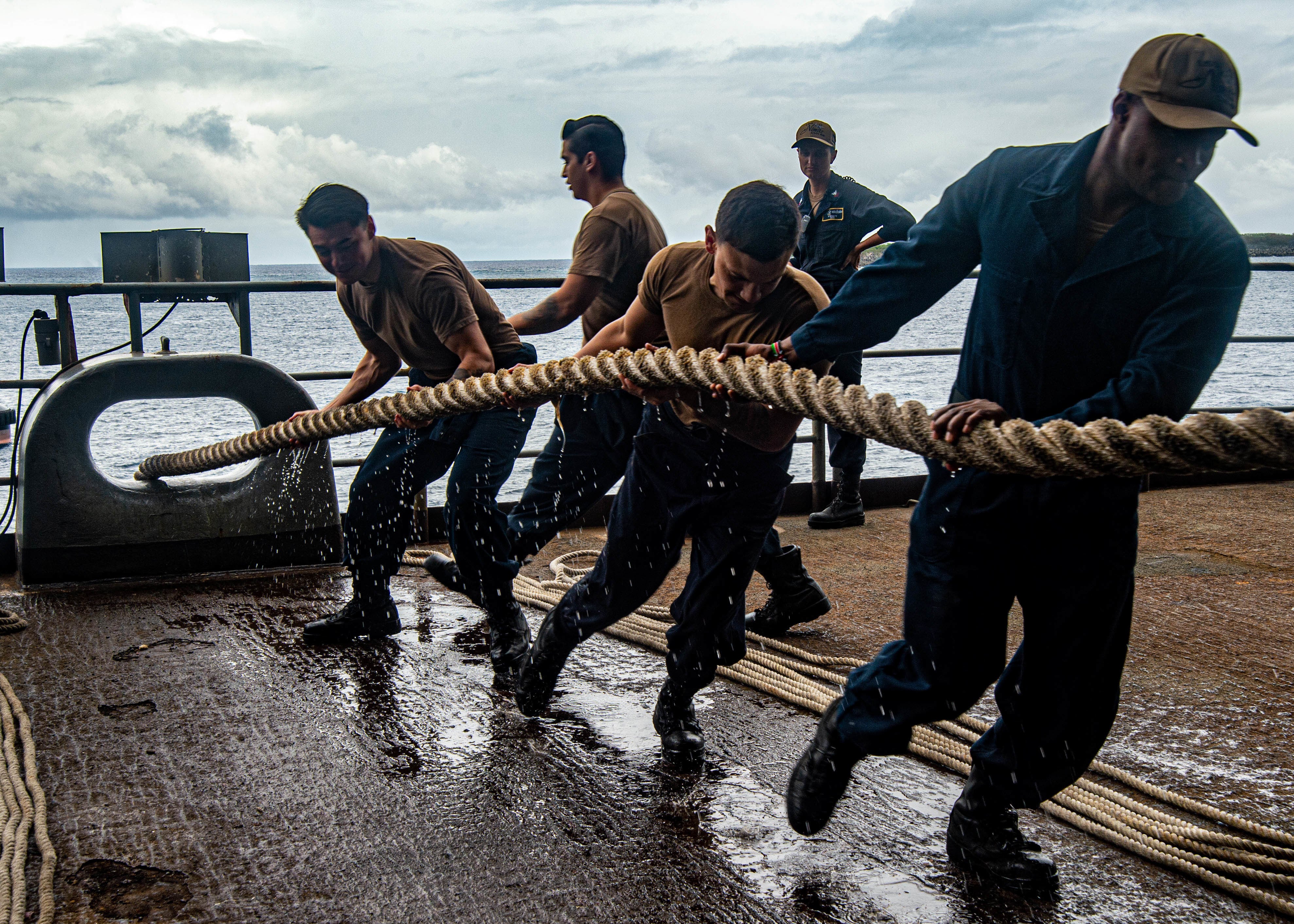
Honest Abe’s nasty water
Lincoln sailors first noticed nasty drinking water on Sept. 21, and that ship’s investigation notes that there was “no evidence” that Lincoln’s potable water tanks were circulated and sampled in the 48 hours before the ship got underway, in accordance with regulations.
There was also no evidence that a contaminated tank was sampled or recirculated before it was placed in service that day.
“An unsatisfactory sample would have prevented placing that tank online,” the report states.
RELATED
The Navy's investigation into water contamination aboard the aircraft carrier Abraham Lincoln
After that troubled tank started supplying sailors, “there were immediate indications of (potable water) contamination.”
As previously disclosed by the Navy, Lincoln’s contaminated drinking water issues stemmed from a hole in a vent header pipe located six inches above the bilge deck.
Corrosion produced the hole “sometime in spring 2022,” the report states.
Lincoln was scheduled to depart North Island on Sept. 18, but the reactor was shut down for repairs, delaying the departure to Sept. 21.
From Sept. 19 to Sept. 21, the bilge levels reached the six-inch height where the corroded venter hole sat, allowing in the dirty fluids.
On Sept. 21, after placing the potable water tank into service, sailors told the plant chief machinery operator that the water “tastes weird.”
That chief machinery operator didn’t alert the chain of command “based on perceptions” that moving from shore to ship-provided water could result in a brief change in taste.
The chief machinery operator told the water control watch sailors that “the tank is bad,” but did not elaborate. The water watch took this to mean that chlorine measurements were off.
That afternoon, more than 12 nautical miles from land, Lincoln experienced a separate “chemistry casualty” that diverted watch stander attention, delaying the identification of any potable water contamination.
By about 7 p.m., the engineering officer of the watch began to get reports that the water smelled, tasted and looked funny, prompting the officer to shut down the potable water tanks that were in use.
That officer did not log the contaminated potable water incident but reported it to the ship’s main propulsion assistant.
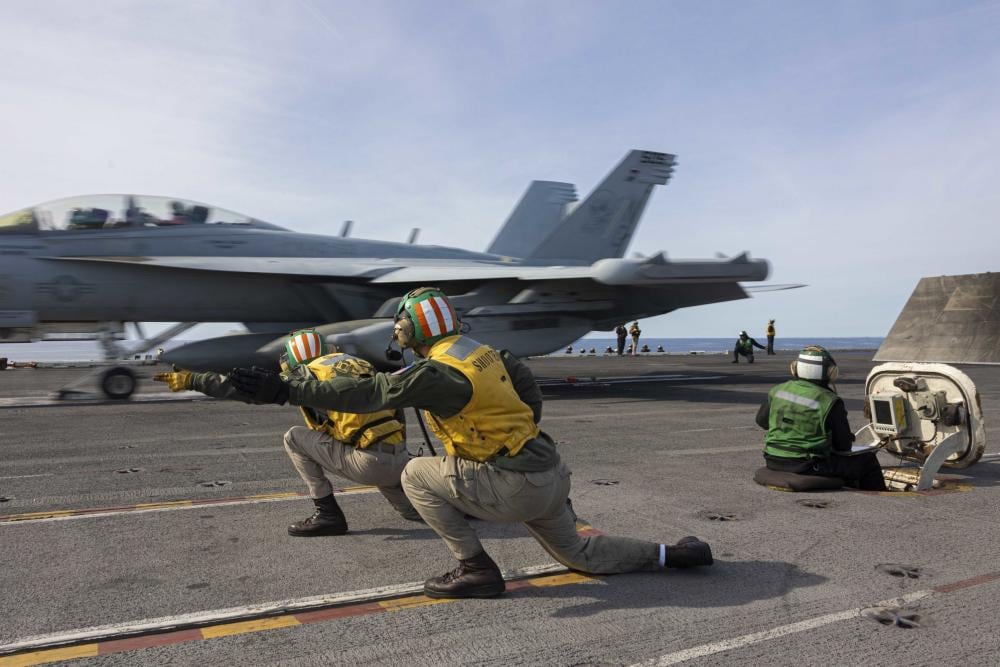
Just before 9 p.m., the contaminated water tank was put back in service as part of a tank shift ordered by the engineering officer of the watch, which reintroduced the source of the contaminated water into the ship’s system.
While the ship’s supply officer and chief engineer tried to figure out what was going on, the report suggests rank-and-file sailors knew something was wrong, as there was a run on bottled water at the ship’s store.
“XO verified with (the supply officer) the quantity of bottled water on hand and suspended bottled water sales to ensure adequate bottled water for the crew would be available” as they worked to fix the potable water system.
Medical took a bacteriological sample of the potable water tank, but results would not be available for 18 hours.
The water later tested positive for E. coli bacteria, which is extremely common and mostly harmless, but can cause severe cramps, diarrhea and vomiting, according to the Mayo Clinic.
That particular vent header that allowed bilge into the drinking water system was susceptible to corrosion and premature failure “in an operational environment with higher-than-normal bilge levels,” the report states.
“If this header had been classified as high interest piping, the next inspection would have occurred in September and a proper inspection likely would have discovered the hole in the vent header and limited the contamination” of the water tank.
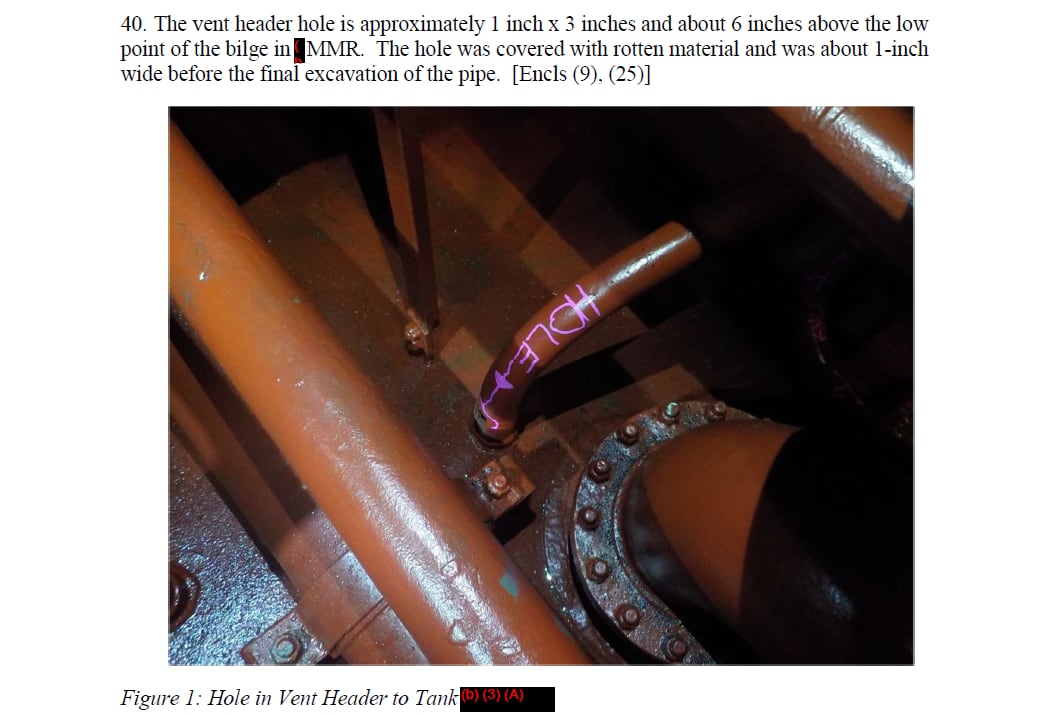
In-line chlorinators used to treat the water system were also “not available for use during most of the deployment,” the report states.
While Lincoln had “learned to live” without the chlorinators as it had not undergone such a modification, such an asset would have “significantly mitigated this issue.”
“Despite missed opportunities in preventing and mitigating the contamination, the response demonstrated proper risk assessment and aggressive response,” the report states.
Puget Sound Naval Shipyard workers traveled to North Island and inspected the potable water tank on Oct. 15 and found the black substance in the bottom, according to officials and the investigation.
Three days later, yard workers discovered the vent header with the hole in it.
The afflicted water tank was inspected during maintenance in Fiscal Year 2020 and received a “‘Good/Normal’” result, according to the report.
That vent header that caused all the issues had not been replaced since Lincoln’s construction, but the ship’s force rated the component “satisfactory” during a March 2022 inspection.
Correction: an earlier version of this story incorrectly stated where Puget Sound Naval Shipyard workers found a potable water tank with a black substance in the bottom aboard the carrier Abraham Lincoln. They discovered the substance while the ship was at Naval Air Station North Island, California.
Geoff is the managing editor of Military Times, but he still loves writing stories. He covered Iraq and Afghanistan extensively and was a reporter at the Chicago Tribune. He welcomes any and all kinds of tips at geoffz@militarytimes.com.









